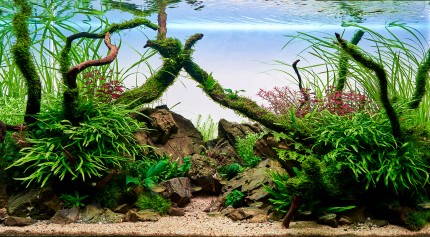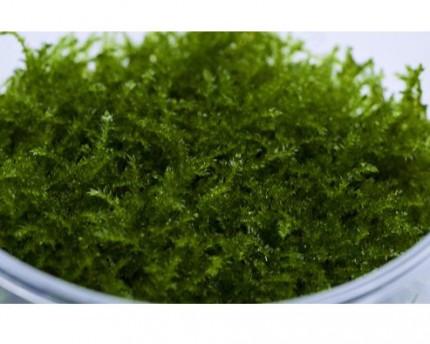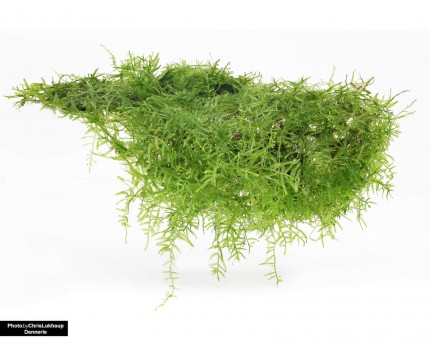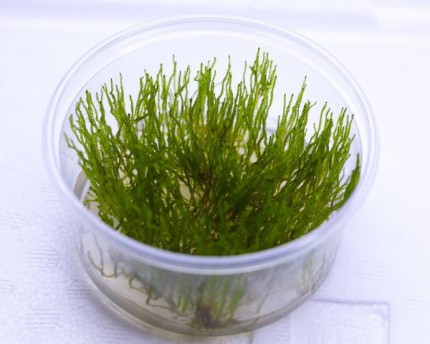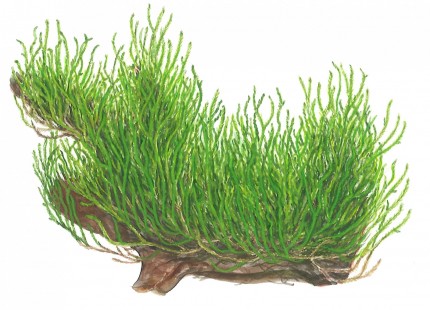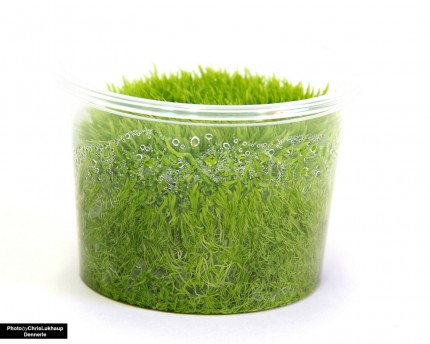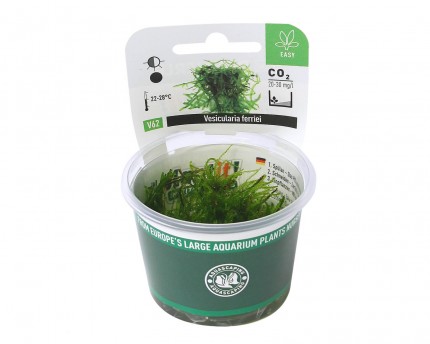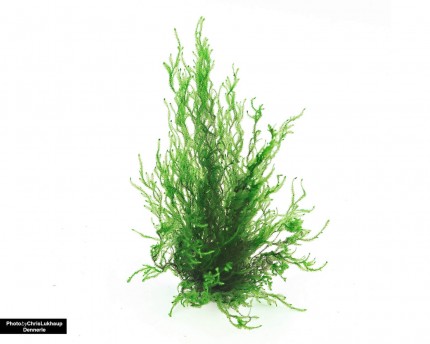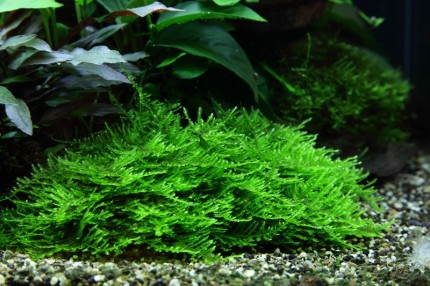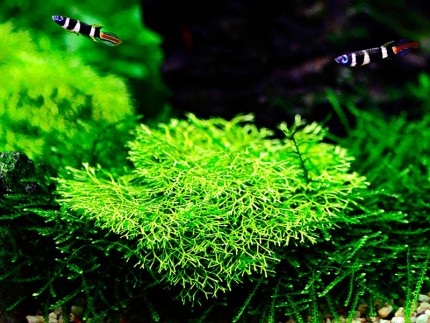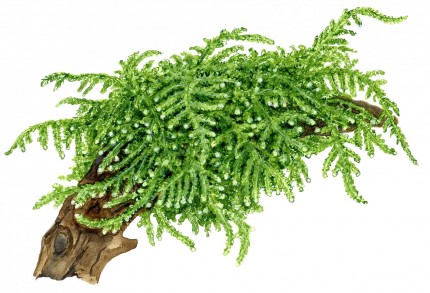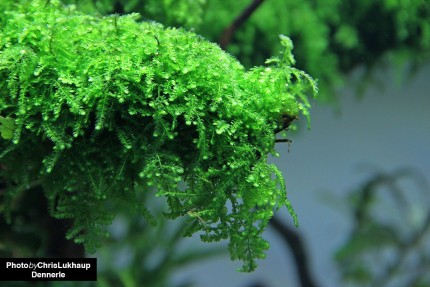Aquarium mosses are ideal for giving an aquarium a natural look. It looks particularly natural when water mosses are tied onto root wood or stones or otherwise attached to them. This way you get sceneries like in nature: mossy stones or even tree trunks covered with a fluffy green fur just look great and also look very authentic in the aquarium. Aquarium bonsais and suitably shaped roots can be planted with mosses and then look like a miniature tree in the underwater landscape.
With conventionally produced aquatic plants you can get into all kinds of trouble: you can introduce snails, worms, tiny crustaceans such as ostracods or cyclops, or even planaria. Imported plants are treated with pesticides that are deadly toxic to shrimp. Conventionally grown aquarium plants from aquatic plant nurseries must therefore absolutely be kept in quarantine for two weeks, so that the dwarf shrimp in the aquarium are not exposed to unnecessary risks. In vitro grown plants from the laboratory are completely different: due to the method of cultivation from meristem tissue, there is no contact with pests here, so no pesticides need to be used. These aquarium mosses and ground covers on this page are also from invitro culture and can therefore be used in shrimp aquariums without a quarantine period. They are also absolutely safe for other invertebrates such as dwarf crayfish and water snails. Simply wash the nutrient gel off the InVitro grown mosses and foreground plants and use - plug and play in the aquarium!
There are different methods to grow InVitro aquarium mosses on root wood or stones. Classically, mosses such as Spiky Moss, Weeping Moss, Flame Moss, Java Moss or Christmas Moss are tied on with a nylon thread, which is transparent and therefore not noticeable. Alternatively, you can glue it on. For this purpose, use a water-neutral glue, either a special plant glue from the aquarium trade or a cyanoacrylate-based superglue. It doesn't matter if it's gel glue or standard, but the gel glue is a little easier to handle because it doesn't run off. The Dry Start method is also good for greening with mosses. In this method, only a hand's width of water is added to the aquarium, the mosses are cut very finely and mixed with water to form a slurry. Then you moisten the hardscape of roots and/or stones and then apply the moss mush everywhere where you want to have the hardscape greened later. Then you spray again properly - but of course without washing off the moss mush again - and cover the aquarium with cling film. Aerate once a day. Quickly the moss shreds develop into moss cushions and form a beautiful, very even green carpet. Weeping moss (Vesicularia ferrei) is especially beautiful on roots. With its overhanging shoots, it makes a particularly attractive eye-catcher in the aquascape or planted aquarium.
InVitro aquarium mosses can also be used naturally as foreground plants. Christmas moss (Vesicularia montagnei), flame moss (Taxiphyllum sp.), Java moss (Taxiphyllum barbieri) and Spiky moss (Taxiphyllum sp.) are best tied to small clay plates or flat stones - gluing them is also possible - and placed in the foreground of the aquarium. Invitro aquarium mosses can also be optimally tied onto stainless steel grids. There are also ready-bound moss plates and moss grids, which only need to be inserted - less work, same result! Pond liverwort (Riccia fluitans), which is actually a floating plant, is also popular to tie up and use in the foreground - Takashi Amano often did this in his natural aquariums, making the beautiful light green Riccia respectable as a foreground plant. In contrast to aquarium mosses, Riccia has a much lighter color and thus brings a completely different liveliness and freshness to the layout.
The lush green Utricularia graminifolia, the grass-like water hose, grown in vitro, is also a great foreground plant. This plant forms roots and therefore does not need to be tied up.
For the right all-round supply of your aquarium mosses with all important nutrients, we recommend our NatureHolic plant fertilizers.

